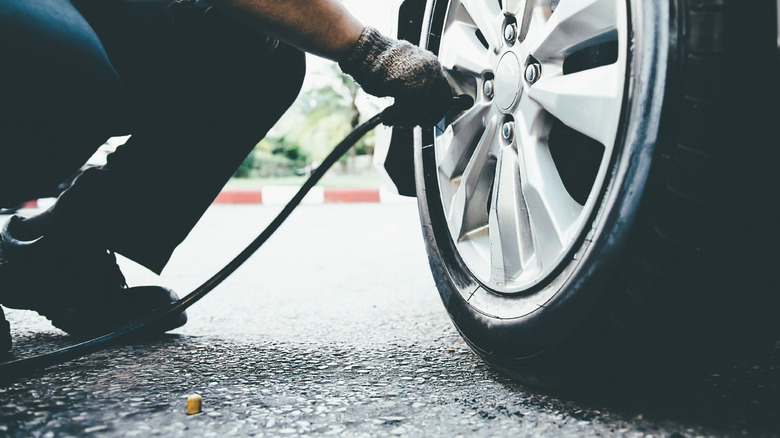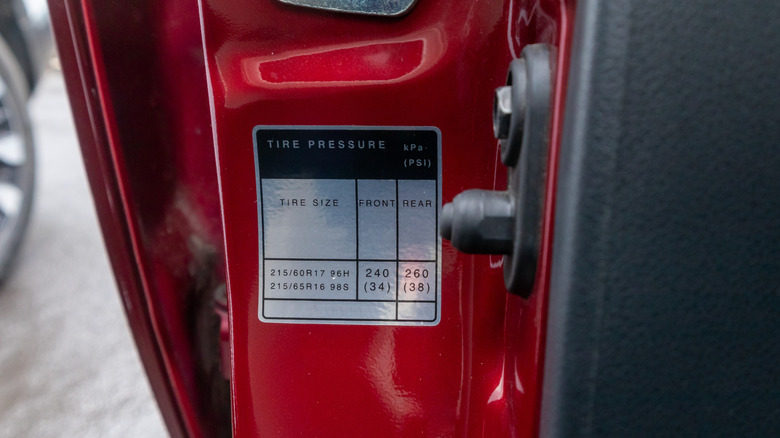What PSI Stands For & How To Know The Max Air Pressure Your Tires Can Handle
Admit it — the only time you pay attention to your car's tires is when one of them is flat. After all, it's easy to assume they're doing fine as long as they can get you from point A to point B. But ignoring your tires for the most part is one of the worst car maintenance mistakes you should avoid making.
Just like your engine and brakes, your tires also need regular TLC. Without proper maintenance, your drive would be affected — you could veer off course, have to refuel more often, or worse, end up getting seriously hurt.
Part of caring for and maintaining your tires is understanding what PSI is. PSI stands for pounds per square inch, the unit of measurement for tire pressure. When you hear your mechanic say your right tire's at 30 PSI, it means that's how much air pressure it has. Checking your tire's PSI is a must-do every now and again to make sure you're not under or overinflating them and unintentionally putting yourself in a risky situation.
PSI and your maximum tire pressure
Just like a balloon, a tire can only be inflated to a certain extent. This limit is what tire manufacturers call the maximum pressure. To check what the max air pressure is, simply look at the number on your tire's sidewall, close to the rim. Find the PSI value next to "MAX PRESS." For Bridgestone and Cooper Tires, this is usually printed as small markings under the brand logo and next to a MAX LOAD entry.
Many manufacturers list the maximum air pressure as kPa first, which means kilopascal, the metric unit for air pressure. They do include the PSI value in parentheses, though. If your tire brand only mentions the kPa value, you can easily convert it to PSI via online calculators, or just check the conversion chart at TyreSafe.
While it's important to know how much air pressure your tire can safely handle, this isn't actually the number you should follow when filling them up. Car manufacturers have a recommended tire pressure for every vehicle model, and most of the time, this is way under the maximum amount.
If you do decide to fill your tires to the max pressure indicated on its sidewall, they'll be overinflated. Overinflated tires can be damaged more easily, make the drive feel bouncy, and decrease your braking power. It's best to follow the recommended tire pressure, not the maximum one.
Max tire pressure vs. recommended tire pressure
The recommended tire pressure is the ideal pressure your tires should have to avoid blowouts, lower fuel consumption, and extend your tire's lifespan. Unlike the max pressure, which is set by the tire manufacturer, the recommended pressure is determined by the maker of the vehicle instead. It's normally a much smaller number. For instance, a Toyota Corolla with Goodyear Assurance All-Season tires has a 51 PSI max pressure, but should only be filled up to 36 PSI for the front and 35 PSI for the rear tires.
Usually, you can find the recommended tire pressure for your specific car model right inside your vehicle. Just open the driver-side door and look for the sticker in the door jamb. Sometimes, it's located inside the glove box, too. The label should say how much air will fill your front, rear, and even spare tires. If you can't make out the value from the sticker or there's no label in the door jamb at all, you can also refer to your owner's manual. Check your car manufacturer's website for an online copy.


